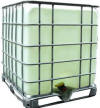| Mubychem Group, established in 1976, is the pioneer manufacturer of Barium Chloride Dihydrate, Pharmaceutical, Fragrance & Flavor chemicals in India. Mubychem Group has several manufacturing facilities spread across Gujarat and Mumbai India and world wide contacts and toll manufacturers. We are exporting globally to countries like USA, Canada, Europe, UAE, South Africa, Tanzania, Kenya, Egypt, Nigeria, Uganda, Turkey, Mexico, Brazil, Chile, Argentina, Dubai etc. |
The participating units have one or more accreditations like FDA - GMP approval; ISO-9001 Certified; "REACH"registered; ISO-22000; Kosher Certified;Halal Certified; HACCP. We offer Pure & IP BP USP FCC Food Grade ACS AR Analytical Reagent Grades of Chemicals | |







Barium Chloride Dihydrate Manufacturers, MSDS Sheet
Barium Chloride Dihydrate Anhydrous Manufacturers
MSDS of Barium Chloride Anhydrous Manufacturers
Barium Chloride Dihydrate MSDS Sheet, Material safety Data Sheet
1. Product Identification
Synonyms: Barium Dichloride Dihydrate; Barium Di Chloride Dihydrate
CAS No.: 10326-27-9
EINECS: EC Number:
233-788-1
Molecular Weight: 244.26
Chemical Formula: BaCl2.2H2O (Barium Chloride Dihydrate)
2. Composition/Information on Ingredients
Ingredient: Barium Chloride Dihydrate
CAS No.: 10326-27-9
Percent: 97 - 100%
Hazardous: Yes
3. Hazards Identification
Emergency Overview
WARNING! CAUSES IRRITATION TO SKIN, EYES AND RESPIRATORY TRACT. HARMFUL IF SWALLOWED OR INHALED. If swallowed, immediately call a doctor/physician.
OSHA Hazards:
Target Organ Effect, Toxic by ingestion.
Target Organs
Heart, Nerves, Kidney, Gastrointestinal tract, Bone marrow, Spleen, Liver.
HMIS Classification
Health hazard: 2
Flammability: 0
Physical hazards: 0
NFPA Rating
Health hazard: 2
Fire: 0
Reactivity Hazard: 0
Contact Rating: 3 - Severe
Protective Equip: Goggles, Lab Coat.
Inhalation: Barium chloride Inhalation may cause irritation to the respiratory tract. If inhaled, remove to fresh air. If not breathing, give artificial respiration. If breathing is difficult, give oxygen. Get medical attention.
Ingestion: Toxic if swallowed. May cause severe gastroenteritis, including abdominal pain, vomiting and diarrhea. May cause tremors, faintness, paralysis of arms and legs, and slow or irregular heartbeat. Severe cases may produce collapse and death on respiratory failure. Do not induce vomiting unless directed to do so by medical personnel. Never give anything by mouth to an unconscious person. Call a physician immediately. Loosen tight clothing such as a collar, tie, belt or waistband.
Skin Contact: May be harmful if absorbed through skin. Barium Chloride Dihydrate solid may cause mild irritation on dry skin; strong solutions or solid in contact with moist skin may cause severe irritation, even burns.
Eye Contact: Check for and remove any contact lenses. In case of contact, immediately flush eyes with plenty of water for at least 15 minutes. Cold water may be used. Get medical attention.
Chronic Exposure: No information found.
Aggravation of Pre-existing Conditions: Persons with pre-existing skin disorders or impaired respiratory function may be more susceptible to the effects of the substance.
Carcinogenic Effects: Not know to be carcinogenic.
Mutagenic Effects: Not available.
Teratogenic Effects: Not available.
Developmental Toxicity: Not available.
The substance is toxic to kidneys, the nervous system, peripheral nervous system, cardiovascular system, upper respiratory tract, central nervous system (CNS). The substance may be toxic to liver. Repeated or prolonged exposure to the substance can produce target organs damage. Repeated exposure to a highly toxic material may produce general deterioration of health by an accumulation in one or many human organs.
4. First Aid Measures
Always seek medical attention after first aid measures are provided.
Inhalation: Remove to fresh air. If not breathing, give artificial respiration. If breathing is difficult, give oxygen. Get medical attention.
Ingestion: Never give anything by mouth to an unconscious person. Get medical attention.
Skin Contact: Wipe off excess material from skin then immediately flush skin with plenty of water for at least 15 minutes. Remove contaminated clothing and shoes. Get medical attention. Wash clothing before reuse. Thoroughly clean shoes before reuse.
Eye Contact: Immediately flush eyes with plenty of water for at least 15 minutes, lifting lower and upper eyelids occasionally. Get medical attention immediately.
Note to Physician: Symptomatic and supportive treatment is recommended. Monitor patients with significant ingestion for respiratory, cardiovascular, and blood pressure status. Watch for cardiac arrhythmias, respiratory failure due to flaccid paralysis of respiratory muscles, pulmonary edema, vocal cord paralysis, severe hypertension, and late effect kidney failure. Acute barium poisoning results in hypokalemia. The administration of fluids containing dilute concentrations of potassium salts may be indicated.
5. Fire Fighting Measures
Flammability of the Product: Non-flammable.
Auto-Ignition Temperature: Not applicable.
Flash Points: Not applicable.
Flammable Limits: Not applicable.
Products of Combustion: Not available.
Fire: Barium Chloride is not considered to be a fire hazard.
Explosion: Barium Chloride is not considered to be an explosion hazard.
Fire Extinguishing Media: Use any means suitable for extinguishing surrounding fire.
Special Information: In the event of a fire, wear full protective clothing and NIOSH-approved self-contained breathing apparatus with full face piece operated in the pressure demand or other positive pressure mode. At high temperatures or when moistened under fire conditions, it may produce toxic or irritating fumes.
6. Accidental Release Measures
Small Spill: Avoid dust formation. Avoid breathing dust. Ensure adequate ventilation. Use appropriate tools to put the spilled solid in a convenient waste disposal container. Finish cleaning by spreading water on the contaminated surface and dispose of according to local and regional authority requirements.
Large Spill: Barium chloride is a poisonous solid. Avoid touching the spilled material. Do not let the product enter drains. Use a shovel to put the material into a convenient waste disposal container. Do not contaminate the environment.
7. Handling and Storage
Toxic! Do not ingest. Do not breathe dust. Wear suitable protective clothing. In case of insufficient ventilation, wear suitable respiratory equipment.
Avoid contact with skin and eyes. Avoid formation of dust and aerosols. Wash hands thoroughly after handling. Provide appropriate exhaust ventilation at places where dust is formed. If you feel unwell, seek medical attention.
Keep Barium Chloride Dihydrate in a tightly closed container, stored in a cool, dry, ventilated area. Protect against physical damage. Moist barium chloride and concentrated solutions can corrode steel. When exposed to the atmosphere, it will absorb water and form a solution.
8. Exposure Controls/Personal Protection
Airborne Exposure Limits: Exposure Limit (PEL) is 0.5 mg (Ba)/m3.
Ventilation System: A system of local and/or general exhaust is recommended to keep employee exposures as low as possible. Local exhaust ventilation is generally preferred because it can control the emissions of the contaminant at its source, preventing dispersion of it into the general work area.
Personal Respirators (NIOSH Approved): For conditions of use where exposure to dust or mist is apparent and engineering controls are not feasible, a particulate respirator may be worn. For emergencies or instances where the exposure levels are not known, use a full-face positive-pressure, air-supplied respirator.
Skin Protection: Wear protective gloves and clean body-covering clothing.
Eye Protection: Use chemical safety goggles and/or full face shield where dusting or splashing of solutions is possible. Maintain eye wash fountain and quick-drench facilities in work area.
Other Control Measures: Maintain good housekeeping in work area. Dust deposits on floors and other surfaces may pick up moisture and cause the surfaces to become slippery and present safety hazards. Handle in accordance with good industrial hygiene and safety practice. Wash hands after handling.
9. Physical and Chemical Properties
Appearance: Barium Chloride Dihydrate is white crystals or powder or granules.
Odor: It is odorless.
Solubility: It is freely soluble in water.
pH: 5.0 - 8 at 5% solution at 25C (77F)
Density: Not available
Molecular formula: BaCl2•2H2O
Molecular weight: 244.26
% Volatiles by volume @ 21C (70F): 0
Boiling Point: 1560C
Melting Point: 962C
Vapor Density (Air=1): No information found.
Vapor Pressure (mm Hg): No information found.
Evaporation Rate (BuAc=1): No information found.
10. Stability and Reactivity
Stability: Barium Chloride Dihydrate is stable under ordinary conditions of use and storage.
Hazardous Decomposition Products: It emits toxic chlorine fumes when heated to decomposition. It may form barium oxide and hydrogen chloride and chlorine.
Hazardous Polymerization: Will not occur.
Incompatibilities: Strong oxidizing agents, bromine trifluoride, 2 -furan percarboxylic acid.
Conditions to Avoid: Incompatibles.
11. Toxicological Information
Acute toxicity
Toxic, and may be fatal, if swallowed. Chronic exposure may cause damage to a variety of body organs. Harmful if inhaled. Typical TLV/TWA 0.5 mg m-3.
Toxicity data for anhydrous material
ORL-RAT LD50 118 mg kg-1
SCU-RAT LD50 178 mg kg-1
IPR-MUS LD50 54 mg kg-1
IVN-MUS LD50 12 mg kg-1
ORL-MAM LD50 398 mg kg-1
Routes of Entry: Inhalation. Ingestion.
Special Remarks on Toxicity to Animals:
Not available.
Carcinogenic Effects: Not available.
Mutagenic Effects: Not available.
Teratogenic Effects: Not available.
Developmental Toxicity: Not available.
The substance may be toxic to heart. Repeated or prolonged exposure to the substance can produce target organs damage.
Potential health effects
Inhalation: May be harmful if inhaled. May cause respiratory tract irritation.
Ingestion: Toxic if swallowed.
Skin: May be harmful if absorbed through skin. May cause skin irritation.
Eyes: May cause eye irritation.
Signs and Symptoms of Exposure: Vomiting, Diarrhea, To the best of our knowledge, the chemical, physical, and toxicological properties has not been thoroughly investigated.
Chronic Effects on Humans: Causes damage to the following organs: kidneys, the nervous system, peripheral nervous system, cardiovascular system, upper respiratory tract, central nervous system (CNS). May cause damage to the following organs: liver.
Other Toxic Effects on Humans: Hazardous in case of skin contact (irritant), of ingestion, of inhalation. Ingestion can be fatal.
Special Remarks on Chronic Effects on Humans: May affect genetic material.
Special Remarks on other Toxic Effects on Humans: May cause adverse reproductive effects. May affect genetic material.
Acute Potential Health Effects:
Skin: Causes skin irritation with possible burning sensation especially if skin is wet or moist.
Eyes: Causes eye irritation.
Inhalation: Causes respiratory tract and mucous membrane irritation with burning sensation and pain in nasal cavities, occasional nose bleeding and tickling in the throat.
Ingestion: Causes eye irritation with redness and pain. May cause blurred vision.
Inhalation: Respiratory tract and mucous membrane irritation. Ingestion: Ingestion may cause gastrointestinal tract irritation with nausea, vomiting, colicky diarrhea, increased salivation, and severe abdominal pain. It may also cause mydriasis, renal failure, hepatocellular damage, dyspnea, tachypnea, shallow breathing, respiratory failure, tinnitus, chest pain, cardiac arrhythmias/disarrythmias, hypertension, bradycardia, hypokalemia, hypophosphatemia, vertigo, faintness, progressive muscular paralysis, muscle weakness, dizziness, tremors, convulsions, and seizures. It may also affect the blood (changes in leukocyte count, changes in serum composition).
Chronic Potential Health Effects: Barium Chloride is a highly toxic substance.
12. Ecological Information
Environmental Fate: Not available.
Environmental Toxicity: Barium chloride accumulates in plants when it exceeds calcium and magnesium levels in soil. It is also toxic to fish.
BOD5 and COD: Not available.
Products of Biodegradation: Possibly hazardous short term degradation products are not likely. However, long term degradation products may arise.
Toxicity of the Products of Biodegradation: The products of degradation are less toxic than the product itself.
13. Disposal Considerations
Whatever cannot be saved for recovery or recycling should be managed in an appropriate and approved waste disposal facility. Processing, use or contamination of this product may change the waste management options. State and local disposal regulations may differ from federal disposal regulations. Dispose of container and unused contents in accordance with federal, state and local requirements.
14. Transport Information
Barium Chloride Dihydrate is regulated.
US DOT & Canada TDG Classification:
UN-Number: 1564 CLASS 6.1: Poisonous material. Packing group: III
Identification: Barium Compound, n.o.s. (Barium Chloride) UNNA: 1564 PG: III
Special Provisions for Transport:
Marine Pollutant No
Poison Inhalation Hazard: No
IATA
UN-Number: 1564 Class: 6.1 Packing group: III
Proper shipping name: Barium compound, n.o.s.
15. Regulatory Information
OSHA Hazards
Target Organ Effect, Toxic by ingestion
DSL Status
All components of this product are on the Canadian DSL list.
SARA 302 Components
No chemicals in this material are subject to the reporting requirements of SARA Title III, Section 302.
SARA Codes
CAS # 10326-27-9: immediate, delayed.
CAS # 10361-37-2: immediate, delayed.
SARA 313 Components
This material contains Barium chloride dihydrate (listed as Barium compounds, n.o.s.), 99+%, (CAS# 10326-27-9) which is subject to the reporting requirements of Section 313 of SARA Title III and 40 CFR Part 373.
SARA 311/312 Hazards
Acute Health Hazard. Chronic Health Hazard.
Massachusetts Right To Know Components
No Components Listed
Pennsylvania Right To Know Components
Barium chloride dihydrate
CAS-No.
10326-27-9
New Jersey Right To Know Components
Barium chloride dihydrate
CAS-No.
10326-27-9
California Prop. 65 Components
This product does not contain any chemicals known to State of California to cause cancer, birth defects, or any other reproductive harm.
Clean Air Act:
This material does not contain any hazardous air pollutants.
This material does not contain any Class 1 Ozone depletors.
This material does not contain any Class 2 Ozone depletors.
Clean Water Act:
None of the chemicals in this product are listed as Hazardous Substances under the CWA.
None of the chemicals in this product are listed as Priority Pollutants under the CWA.
None of the chemicals in this product are listed as Toxic Pollutants under the CWA.
EINECS: EC Number:
233-788-1
Hazard Symbols:
T
Risk Phrases:
R 25 Toxic if swallowed.
R 20 Harmful by inhalation.
Safety Phrases:
S 45 In case of accident or if you feel unwell, seek medical advice immediately (show the label where possible).
WGK (Water Danger/Protection)
CAS# 10326-27-9: 1
CAS# 10361-37-2: 1
Canada - DSL/NDSL
CAS# 10361-37-2 is listed on Canada's DSL List.
Canada - WHMIS
This product has a WHMIS classification of D1B.
This product has been classified in accordance with the hazard criteria of the Controlled Products Regulations and the MSDS contains all of the information required by those regulations.
Canadian Ingredient Disclosure List
CAS# 10326-27-9 is not listed on the Canadian Ingredient Disclosure List.
CAS# 10361-37-2 is listed on the Canadian Ingredient Disclosure List.
TSCA
CAS# 10326-27-9 is not on the TSCA Inventory because it is a hydrate. It is considered to be listed if the CAS number for the anhydrous form is on the inventory (40CFR720.3(u)(2)).
CAS# 10361-37-2 is listed on the TSCA inventory.
Health & Safety Reporting List
None of the chemicals are on the Health & Safety Reporting List.
Chemical Test Rules
None of the chemicals in this product are under a Chemical Test Rule.
Section 12b
None of the chemicals are listed under TSCA Section 12b.
TSCA Significant New Use Rule
None of the chemicals in this material have a SNUR under TSCA.
CERCLA Hazardous Substances and corresponding RQs
None of the chemicals in this material have an RQ.
DSCL (EEC):
R20- Harmful by inhalation. R25- Toxic if swallowed. S28- After contact with skin, wash immediately with plenty of water.
S36/37/39- Wear suitable protective clothing, gloves and eye/face protection. S45- In case of accident or if you feel unwell, seek medical advice immediately (show the label where possible). S46- If swallowed, seek medical advice immediately.
HMIS (U.S.A.):
Health Hazard: 2
Fire Hazard: 0
Reactivity: 0
Personal Protection: E
National Fire Protection Association (U.S.A.):
Health: 2
Flammability: 0
Reactivity: 0
Specific hazard:
Protective Equipment:
Gloves. Lab coat. Dust respirator. Be sure to use an approved/certified respirator or equivalent. Wear appropriate respirator when ventilation is inadequate. Splash goggles.
Australian Hazchem Code: -
Poison Schedule: -
16. Other Information
Disclaimer:
**********************************
Our company provides this Barium Chloride Dihydrate MSDS sheet in good faith but makes no representation as to its comprehensiveness or accuracy. This Barium Chloride Dihydrate MSDS sheet is intended only as a guide to the appropriate precautionary handling of the material by a properly trained person using this product. The above information has been compiled from various sources and has the possibility of discrepancy and being out-dated information. Individuals receiving the information must exercise their independent judgment and do further search in determining its appropriateness for a particular purpose. In no case shall our company be liable to loss or damages by the product user.
**********************************
Barium Chloride Dihydrate Manufacturers:
MUBYCHEM GROUP
CHINCHBUNDER, MUMBAI 400009, INDIA
TEL: (OFFICE) 91-22-23774610, 91-22- 23723564. 91-22-23728264
e-mail: anmol@pcmenergy.com

Copyright and Usual Disclaimer is Applicable.
Global or International Barium Chloride Dihydrate Suppliers, Exporters, Importers, Manufacturers
If I give you “My Word” Nobody can undo it.
If I sign an “Agreement” my Lawyer will undo it
Perfection is made up of small thing but it is not small.


